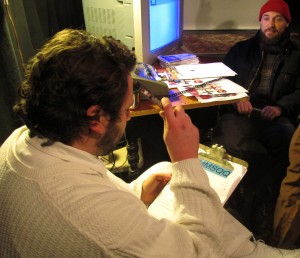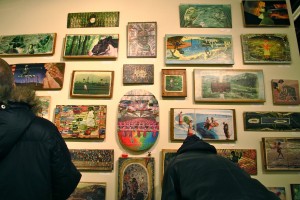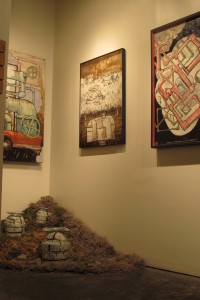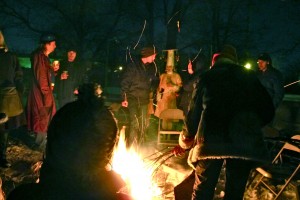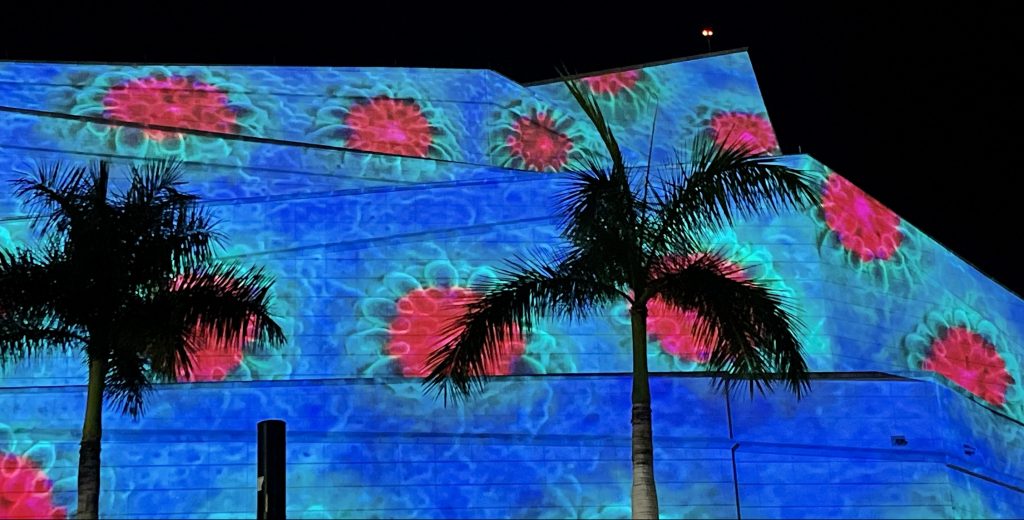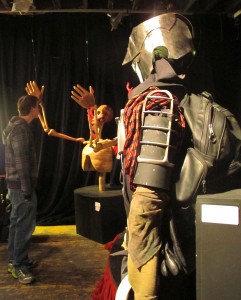
Staring down the apocalypse
The Contemporary Art Institute of Detroit (CAID) sits as the sole remaining building on its block at Warren and Rosa Parks, in a seemingly abandoned neighborhood in a city that, until very recently, had been all but forgotten beyond its borders. A fitting venue for “The Apocalypse Show,” a wild assortment of media and performance-based work, including collage, paintings, sculptures, a confession booth, Malthusian evangelists, written word, spoken word and even more. Detroiters rejoice. This kind of show requires the spirited collaboration and participatory environment that a city like Detroit is uniquely capable of fostering.
There are many macabre pieces on display, such as drawings depicting families in gas masks and an enormous wooden skeleton — hands outstretched as if imploring a higher power — but these darker pieces are balanced by enthusiastically lighthearted pieces. On the lighter side, for example, there is the Midland Michigan Malthusian Society, who administered a test of my “PQ” (Preparedness Quotient), a nice riff on Scientology “stress tests,” infused with militiaman fanaticism. At a table that held a TV flashing images warning of global conspiracies, I was told to grip a “sensor” in my hands (actually a phone receiver) while I was asked a series of questions in straight deadpan. Practical questions, such as, “Have you read the complete Federalist Papers?” followed by the comical, “Do you ever have fleeting thoughts? If yes, when and how often?” and then on to the practical and comical, “Do you season your beef?” I scored a “4” and was awarded four bottle caps (because, I was told, metals will be important after “the event”).
Following my PQ test, I found myself staring at a wall of collages by Andrew Kemp. Featuring cut-up “National Geographic” images on found wood, the pieces were brilliantly colorful, strangely rustic and also a disorienting collision of worlds. In one piece, a golfer prepared a swing in the field of a working farm, and in others, indigenous peoples stood amidst whorls of cold western technologies, heightening the contrast between our world and “the other.” “Our” world, with its sterilized, white-coated scientists working in labs, and the “other” world of indigenous hunters, spears in hand, existing contentedly beyond the reach of our often-dehumanizing technology.
Behind the gallery, Kinga Osz-Kemp kept a bonfire going for a piece called “What of Fire,” encouraging people to burn items of importance and tell stories of their own apocalypse. By the time I made it out there temperatures had dropped into the low teens, rousing a primal desire to be part of the group crowding near the fire’s warmth. One man shared a personal story of a fire that took his house, and how that seemed like the end, but was ultimately just an end, not the end. He was lucky, the firefighters told him, because everyone survived, which is not the usual house fire narrative. Later in the discussion, the Mayans came up, with the end of their calendar coming due later this year, and someone pointed out that, really, the Mayans in a sense already had their apocalypse, which arrived in the form of conquistadors.
Which is to say the end never looks how you expect it to. It is something universally feared and also privately, idiosyncratically feared. But also, perhaps, so ridiculous that it becomes both funny and fearful, a kind of Lynchian nightmare comedy not unlike “Twin Peaks.” “The Apocalypse Show” does an excellent job of striking a difficult balance, and in this brief write-up I’ve hardly touched on the enormity of the presentation. So, go and see it, if you have time, while you still have time, before it’s too late.
All photos by Sarah Sharp. The Contemporary Art Institute of Detroit (CAID): 5141 Rosa Parks Blvd., Detroit, [email protected]. thecaid.org
Recent Content
-
Artsarticle ·
-
Artsarticle ·
-
Artsarticle ·
